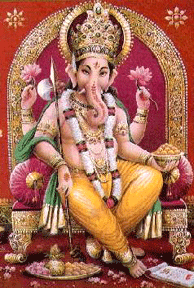Apr 18, 2025
Apr 18, 2025
 In Hindu traditions, Lord Ganesha - the elephant God - is invoked before performing any auspicious act. The deity of wisdom is highly revered by students. The reverence of the students is not merely a belief but the understanding of the hidden attributes of the image and by invoking Lord Ganesha, the students attempt to imbibe those qualities.
In Hindu traditions, Lord Ganesha - the elephant God - is invoked before performing any auspicious act. The deity of wisdom is highly revered by students. The reverence of the students is not merely a belief but the understanding of the hidden attributes of the image and by invoking Lord Ganesha, the students attempt to imbibe those qualities.
What exactly does the image of Ganesha convey?
Ears
The ears convey that the students should listen intently.
Trunk
Although very huge in size, the trunk as an instrument is capable of lifting a huge tree on one hand and pick up a needle on the other. The students learn to accomplish great feats and also to be able to perform even a smallest of job with humility.
Head
The largeness of the head indicates the seat of a powerful intellect.
Big Belly
The students should be able to not only assimilate what they learn, but also be able to hold the knowledge and contemplate.
Tusks
Ganesha has two tusks but one of them is broken. The complete tusk indicates the projection of thought outward. The broken tusk indicates that when a thought becomes a source of bondage, one should simply break it.
Mouse
The mouse is the indicator of Mind. Ganesha rides the mouse for traveling, implying the complete conquest of egoism.
The complete picture also indicates the process of evolution. A small creature like mouse gradually evolves into an elephant and finally becomes a man. That is why Ganesha has a human body, an elephant's head and a mouse as his vehicle.
08-Jun-2000
More by : Rajender Krishan